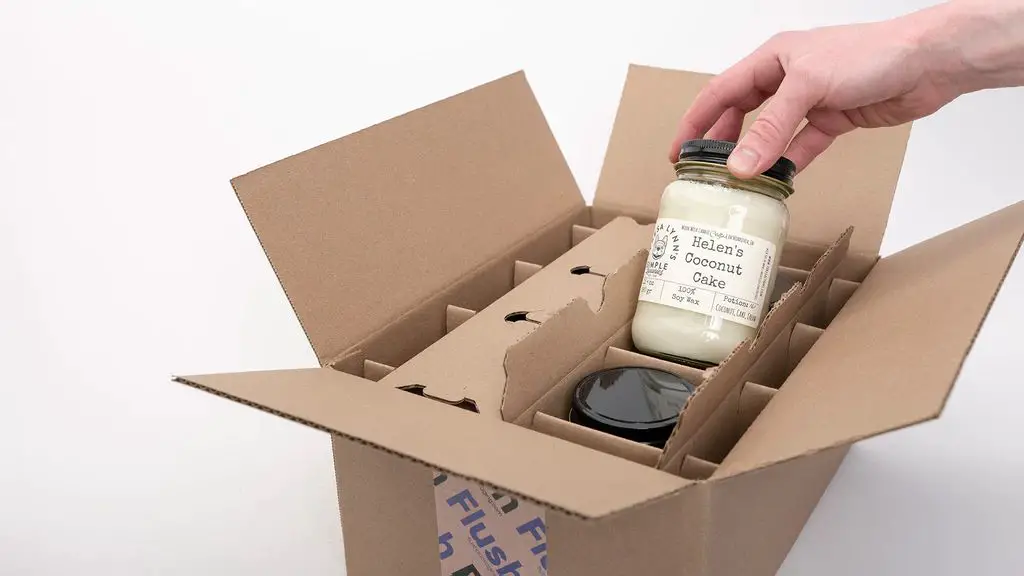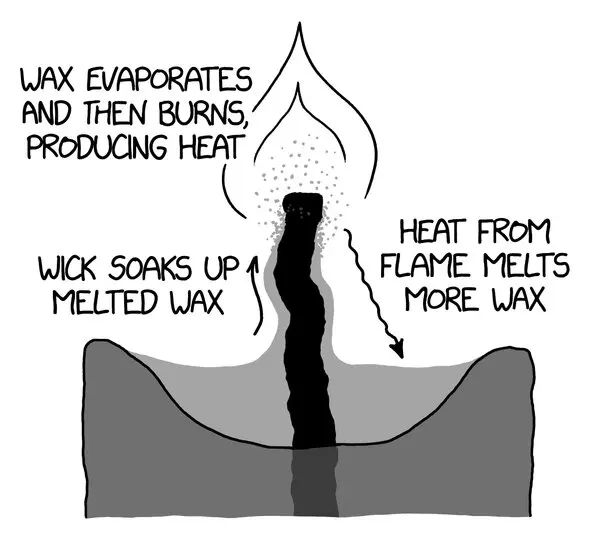Will A Candle Melt If Mailed?
Mailing candles is a common practice for many small businesses, Etsy sellers, and candle enthusiasts. Often, people want to mail candles as gifts to friends and family who live far away. Sending a scented candle in the mail allows the recipient to enjoy the scent and experience of a hand-poured, homemade candle without having to pay for expensive shipping costs.
However, there is always a concern that the candle might melt, get damaged, or even start a fire during transit through the postal service. The typical transit time for a package to go cross-country is about 2-4 days depending on the carrier and service. With summer temperatures easily reaching over 100°F in many parts of the country, a candle left inside a mailbox or postal vehicle could become a melted mess by the time it reaches its destination.
This article provides helpful information on how to properly package and ship candles through the mail without damage. We will explore the composition of candles, effects of summer and winter temperatures, packaging techniques, mailing restrictions, real-life case studies, and final recommendations for how to safely and successfully mail candles.
Candle Composition
Candles are typically made from wax, which comes in different forms including paraffin, beeswax, soy, and coconut wax. Each type of wax has a different melting point:
- Paraffin wax is a petroleum byproduct and the most commonly used candle wax. It has a melting point of 46–68°C (115–154°F) (Source: https://homesick.com/blogs/news/what-are-candles-made-of).
- Beeswax is a natural wax made by honey bees. It has a higher melting point of 62–64°C (144–147°F) (Source: https://www.quora.com/What-are-the-differences-between-paraffin-and-beeswax-candles-in-terms-of-burning-time-flame-size-scent-and-melting-point).
- Soy wax is made from soybean oil and typically has a melting point of 57–60°C (135–140°F).
- Coconut wax comes from coconut oil and melts at around 76–82°C (169–180°F).
The melting point of the wax determines how easily a candle will melt when exposed to heat. Lower melting point waxes like paraffin are more prone to melting in warm environments.
Summer Temperatures
During the summer months, temperatures inside mail trucks and warehouses can get extremely hot. According to reports on Quora, most USPS trucks and warehouses are not climate controlled. This means temperatures inside can reach over 100°F on hot summer days.
In fact, a news report from Fox 13 Seattle cited an instance where a postal worker cooked a steak inside a mail truck to an internal temperature of 142°F to demonstrate the unsafe working conditions (Fox 13 Seattle). The Postal Reporter blog also described how temperatures inside mail trucks can exceed 117°F on hot days (Postal Reporter).
These extremely high temperatures inside mail trucks and warehouses during summer months could potentially cause candles and other temperature-sensitive items to melt or become damaged.
Winter Temperatures
According to research from this article, the average temperature during winter in most states ranges between 2 degrees to 12 degrees Fahrenheit inside mail trucks and warehouses. This is because USPS facilities and trucks are generally not climate controlled or heated. While there can be some variability depending on the region, mail experiences very cold temperatures during transport in the winter months.
Specifically in California, research shows that average winter temperatures in mail trucks range from 40-50 degrees Fahrenheit according to this Quora post. However, temperatures can dip below freezing at night. Mail items are exposed to these cold temperatures as they move through the USPS system.
In summary, the research indicates that mail trucks and warehouses experience frigid temperatures in the winter, often ranging from just above freezing to as low as 2 degrees Fahrenheit in some areas. This harsh winter climate inside mail facilities can impact mailed items like candles.

Transit Times
According to the USPS, the average delivery time for a mailpiece or package across the nation is 2.5 days. However, transit times can vary depending on the class of mail service used, such as first-class vs standard mail. For standard mail sent within the continental United States, the average delivery time is between 3-4 days.
When shipping a package containing a candle, it’s recommended to use Priority Mail which has a transit time of 1-3 business days on average. The transit time also depends on the origin and destination zip codes. The USPS provides a delivery time calculator to estimate transit times based on location.
During peak mailing seasons like the holidays, delivery times may be extended by a day or two. Colder winter temperatures can also slightly lengthen transit times across the country.
Mailing Packaging
Proper packaging is crucial to prevent candles from melting during shipping. According to https://www.easyship.com/blog/how-to-ship-candles, candles should be wrapped in bubble wrap or tissue paper first to cushion them and absorb any melted wax. The wrapped candles can then be placed inside a sturdy cardboard box filled with packing peanuts, crumpled tissue paper, or shredded paper to keep them immobilized. The box should have at least 2 inches of room on all sides of the candles. Tape the box well and mark it “fragile.”
For added protection, https://www.sttark.com/blog/how-to-package-and-ship-candles recommends placing candles in the freezer for 1-2 hours before packaging. The chilled candles are less likely to melt in transit. Ice packs can also be added inside the box to maintain cool temperatures. However, be sure to wrap ice packs separately so condensation doesn’t damage the candles.
Using proper inner cushioning and immobilization along with an insulated outer shipping box can help prevent candle melting during mailing.
Mailing Restrictions
There are several restrictions around mailing candles that need to be considered.
According to the United States Postal Service (USPS), mailing candles is restricted but not completely prohibited. Candles may be mailed via USPS retail ground, parcel select or media mail, but certain rules must be followed.
First, candles must be packaged in a way that prevents shifting during transport. This usually means securing candles in boxes surrounded by cushioning material like packing peanuts, bubble wrap or crumbled paper. Candles also cannot come into direct contact with any outer packaging.
Second, if liquid candles like jar candles or votives are being shipped, each one must be wrapped with enough absorbent material to fully contain any leaking wax. Liquid candles also cannot comprise over 30% of the total parcel weight.
Finally, international shipping of candles is more restricted. The USPS prohibits mailing candles to some destinations, while other postal services like Royal Mail in the UK ban mailing candles entirely.
Private carriers like UPS and FedEx have their own restrictions too. UPS bans shipping any candle with a cotton or paper wick. FedEx does not allow mailing candles at all internationally, and has limitations on mailing candles domestically.
In summary, candles can be carefully packaged and mailed domestically in the US via USPS, but restrictions apply. Sending candles internationally is very limited. Checking carrier rules before mailing any candle is advised.
Case Studies
There are a few examples online of people who have successfully mailed candles without any issues. According to a post on the Candle Science forum, one user mailed a 16 oz. soy candle across the country during summer temperatures and it arrived intact and did not melt (https://www.candlescience.com/learning/will-a-candle-melt-in-the-mail/). The candle was packaged well in a box with plenty of bubble wrap and peanuts. Another user on Reddit gifted candles to relatives and mailed them successfully even in summer heat by choosing containers that have a higher melting point and packaging them very carefully (https://www.reddit.com/r/candles/comments/wqlgf4/has_anyone_ever_mailed_candles/).
There are also some examples where mailed candles did not fare so well. One post on the Candle Science forum described receiving a mailed candle that was completely melted down. The poster believed it was because the candle was shipped via ground transportation through very hot southern states in the summer (https://www.candlescience.com/learning/will-a-candle-melt-in-the-mail/). Another Reddit user shared their experience where a mailed candle arrived melted despite being packaged well because it sat in a hot warehouse for too long before being delivered (https://www.reddit.com/r/candlemaking/comments/ex0azo/shipping_candles/).
These examples show mailing candles can be successful if packaged very carefully but there are risks of melting if they sit in hot conditions for too long during transit and delivery.
Recommendations
When shipping candles, it is important to take steps to prevent melting during transit. Here are some tips based on expert recommendations:
Use packaging designed for shipping candles – Look for boxes made of cardboard with folded flaps and bubble wrap or other cushioning inside. The packaging should fully surround each candle with at least 1 inch of space. Proper packaging prevents shifting and protects candles if other parcels put pressure on the box (source).
Ship during cooler months – Candles are less likely to get overheated in transit when shipped during late fall, winter, and early spring. Avoid shipping candles during the hottest summer months if possible (source).
Use insulation and ice packs – Insulation like bubble wrap helps regulate temperature fluctuations. For hot climates, place ice packs on top of the candle packaging inside the shipping box to keep the candles cool.
Choose fast shipping – Select a shipping method with a short transit time to minimize exposure to temperature extremes. Priority mail or expedited shipping gets candles to their destination quicker.
Include melt warnings – Put a label on the box indicating the package contains candles that may melt. This alerts shipping handlers to use caution and prioritize these parcels.
Conclusion
In summary, the likelihood of a candle melting during mailing depends significantly on the season, transit time, packaging used, and composition of the candle itself. During hot summer months, there is a high probability that candles will melt, especially paraffin varieties, when mailed without insulation. Long transit times also increase chances of melting. For best results, soy or beeswax candles should be used, packaged in insulated boxes with ample bubble wrap during cooler months. Even then, there is still some risk of melting during longer deliveries. The safest option is to hand-deliver candles or use expedited shipping during winter. With proper precautions, it is possible for many candles to reach their destination intact when mailed, but some melting risk will always exist.






